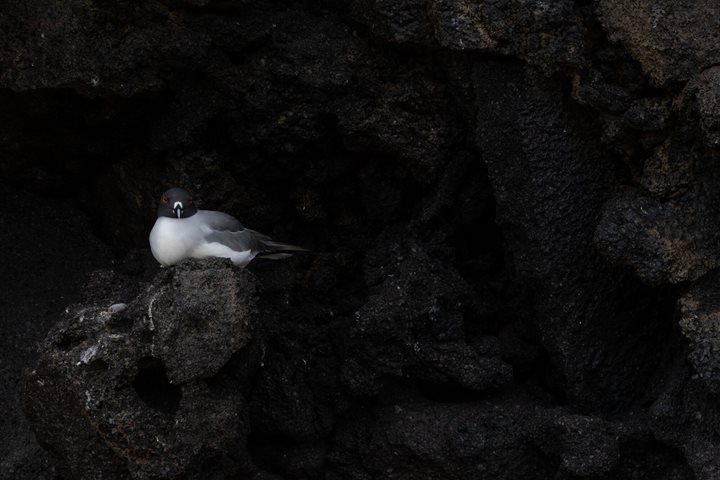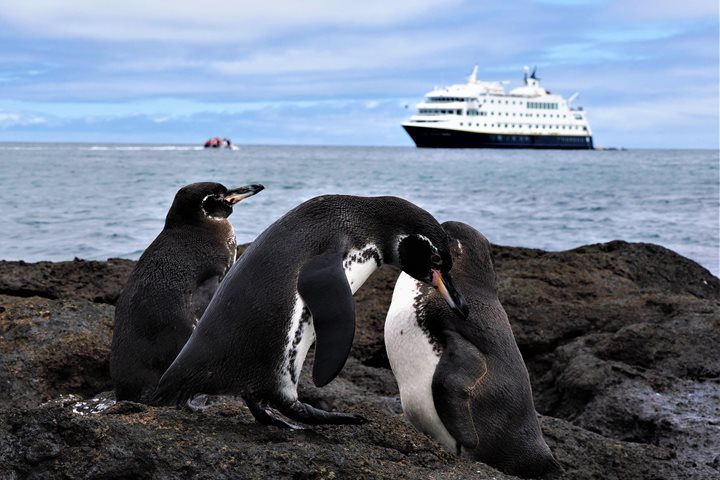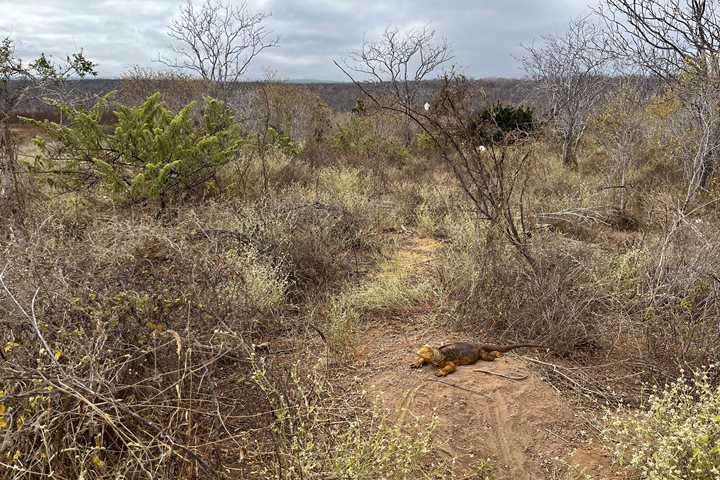Today we had a chance to look into the daily life of someone living in Galapagos, since we visited the town of Puerto Ayora and had lunch at a rancho in the foothills of Santa Cruz. We also got an intimate look at the giant tortoises, probably the most emblematic species of these islands.
In the morning, the first activity was visiting the tortoise breeding center that lies between the main offices of the National Park administration and the Charles Darwin Research Station. Imagine a collection of low build barracks in a dry forest dominated by giant cacti, a rocky coast line with dense mangrove forests and winding through that a boardwalk taking you along the corrals holding several subspecies of giant tortoises.
It’s hot and humid during our visit and we are grateful that the sun is hiding behind a light blanket of clouds. Higher up in the hills we can see showers coming down at regular intervals. Summer, bringing the warm currents from the northeast and the soft rains from the mainland, has arrived in Santa Cruz. Soon everything will be green, and humming with insects.
At the breeding center we learn about the tortoise breeding program, the interaction between humans and tortoises both in the past and nowadays. We see the differences in the morphs of several subspecies, the two sexes and a range of different ages, and we enjoy the busy birdlife in the canopies of the giant opuntia and candelabra cacti.
After this there is some time to spend in town before we head into the hills of Santa Cruz, where some of us visit a small traditional farm, some of us take a bicycle ride and some of us visit a small private school. It is interesting for me to observe the mix of emotions among the small group of guests that join me at the school visit. After a first shock of delight because of all the lush surroundings, as the school is situated in a forest, there is the more sobering information about the difficulties that this particular school, as well as island communities worldwide, cope with. I watch the reactions of several people in the group as I share this information. I am grateful that National Geographic and Lindblad Expeditions offer these insights to our guests. It is essential to the complete Galapagos experience to understand that the human residents living on these islands face many difficulties and challenges, and problems are more complex because of a unique set of factors, call them endemic if you like.
When we finish up lunch we turn our full attention to some of the oldest residents of this island, the giant tortoises. Unlike the morning, the climate in the hills is pleasant, the surroundings are lush and the tortoises are, besides impressively big, also more active. For many of us it all comes together since the sight of these lumbering, ancient looking creatures browsing the grasses with vigor while breathing noisily can, with some imagination, take one back to the prehistoric times. Really much hasn’t changed in their ecology and habitat. Add to that the remoteness of these islands and you are in a natural wonderland, lost in both time and bearings.
After this short, contemplative walk, it is time for action again. Those of us who like the the crowded and chaotic, bustling and noisy little port town spent a little more time there. While others decided to savor their encounter with the giant tortoises, so remote and unchanged, and then return to the comfort of a spotless cabin and a warm shower on the National Geographic Endeavour where in the evening EcoArte, a local dance- and instrumental group, performed some hot-blooded songs for us.







